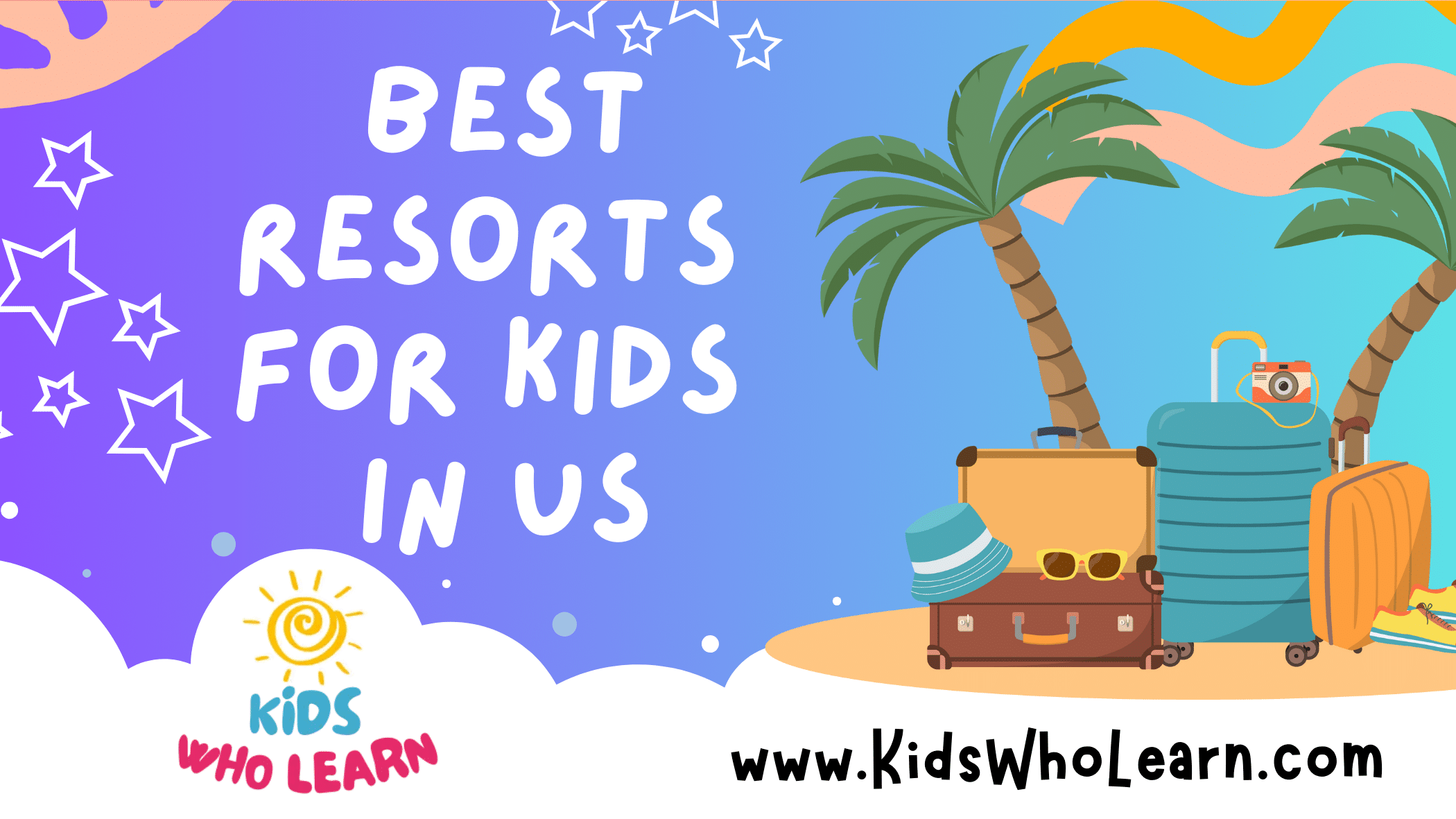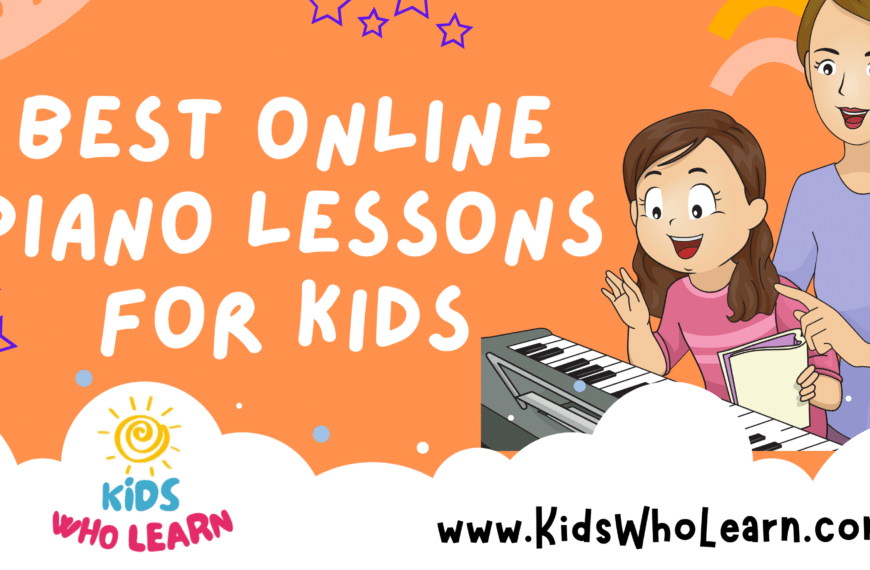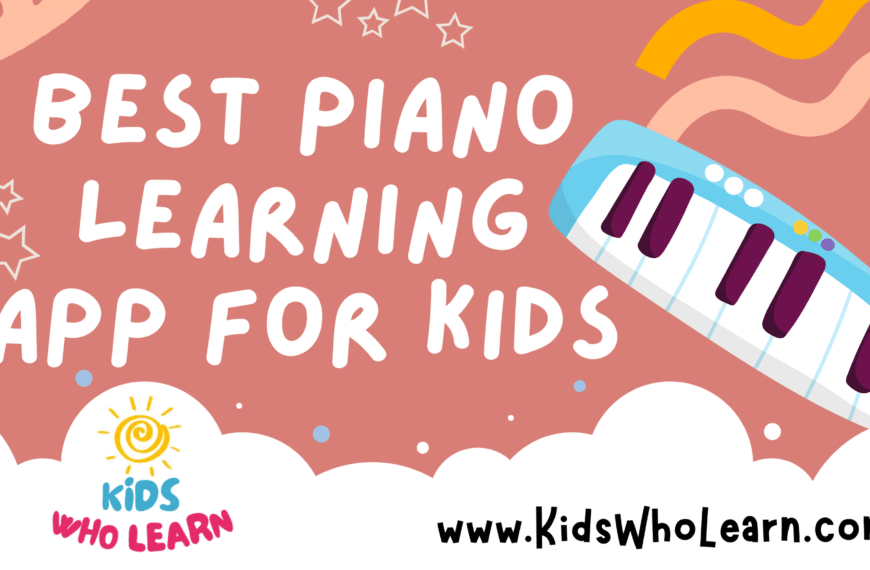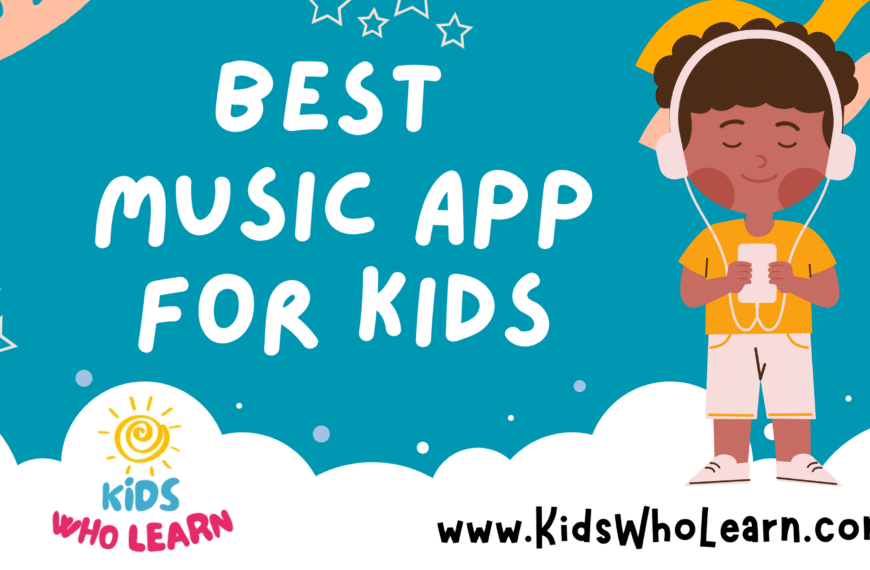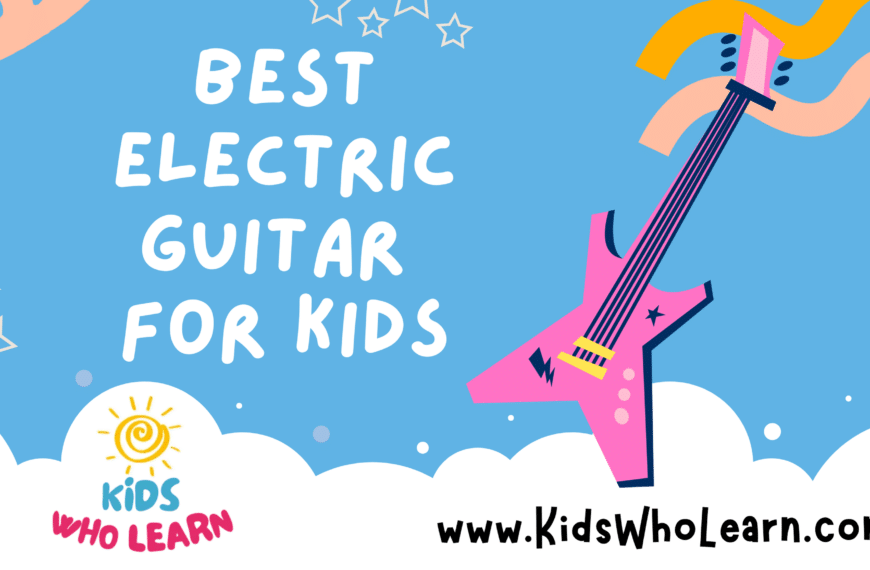Engaging children in learning to play the piano has never been easier, thanks to a variety of piano apps designed specifically for the younger demographic. These apps offer a rich learning experience that can often rival traditional methods, providing an interactive and enjoyable introduction to music education. With the aid of technology, piano apps can ignite a passion for music in children through a platform they are familiar with and excited to use.
Selecting the best piano app for kids involves identifying applications that are not only user-friendly and engaging but also educational and adaptive to different skill levels. Today’s market offers a plethora of choices, from free versions that introduce the basics to paid apps that offer a more comprehensive learning journey. Features such as gamification, interactive lessons, and a multitude of songs make these apps appealing to children, while parents appreciate the structured progression and the ability to track their child’s advancement.
Key Takeaways
- The best piano apps for children offer engaging, educational content tailored to young learners.
- A combination of interactive features and structured learning paths enhances the piano learning experience.
- There is a wide range of apps available, catering to various preferences, skill levels, and budgets.
Advantages of Piano Apps for Kids
When you introduce your child to a piano app for kids, you’re providing a convenient and accessible way for them to explore music. These apps allow children to practice anytime and anywhere, whether on a tablet, phone, or computer. This flexibility is a significant plus over traditional methods that require access to an acoustic piano or keyboard.
| Advantages | Description |
|---|---|
| Accessibility | No need for a large instrument; use on any iOS device or Android gadget. |
| Cost-Effective | Generally cheaper than purchasing a digital or acoustic piano. |
| Interactive Learning | Many apps provide engaging, game-like lessons that hold kids’ interest. |
| Instant Feedback | Apps can offer immediate correction and guidance, speeding up the learning process. |
Unlike a traditional piano, a piano app can transform a simple keyboard on a screen into a full piano, often complete with a variety of sounds and features. This innovation harnesses the power of technology to tailor the learning experience to your child’s needs. These apps are especially useful for beginners, as they usually start with fundamental concepts and gradually increase in complexity.
Furthermore, many piano apps include a wide range of songs suited for children, from classical to contemporary. This ensures that young learners stay motivated and engaged with their practice. The apps also track progress, which helps you and your child celebrate their achievements and stay focused on their goals. Your child’s journey with music becomes a rewarding experience as they witness their own progress reflected in the app’s tracking system.
Criteria for Choosing the Best Piano App
Selecting the right piano app for kids involves careful consideration to ensure it aligns with their age, educational needs, and engagement level. Your choice should foster their musical journey while accommodating their personal interests and learning style.
Age Appropriateness
Your child’s age is a primary factor in choosing a piano app. The app should suit their cognitive and motor skill level. For beginners and particularly young students, look for simple, colorful interfaces with large buttons. For more advanced learners, the app can offer detailed options that allow for a deeper exploration of piano playing.
Curriculum and Structured Learning
Choose an app with a curriculum that offers a step-by-step learning journey tailored to different skill levels. This structured progression helps students stay on track and build upon their knowledge. A busy schedule shouldn’t hinder learning; thus, the app should also accommodate flexible lesson plans.
Interactivity and Feedback Mechanisms
Engagement increases with interactivity. Kids benefit from real-time feedback mechanisms like instant note recognition, which often uses the device’s microphone to listen and evaluate their play. This helps mimic a traditional lesson, providing a valuable learning experience.
Song Library Diversity
A diverse library of songs across genres like pop, classic, and rock is essential. It keeps practice sessions fresh and caters to a wide range of musical preferences, which can motivate kids to consistently engage with their piano lessons.
Ease of Use
Finally, the app must be user-friendly, especially for new users. A simple, intuitive interface allows kids to navigate the app independently, making it ideal for those with a busy schedule or minimal supervision.
Top-Rated Piano Apps for Various Skill Levels
Selecting a piano app that suits your skill level and learning style is crucial. Apps range from interactive lessons for beginners to advanced tutorials for more experienced players.
Simply Piano by JoyTunes
Simply Piano is ideal for beginners who have just started their musical journey. The app offers a wide range of songs and provides real-time feedback as you play. It’s user-friendly and adapts to your progress, but keep in mind that a subscription is required to access all content.
Flowkey
Flowkey caters to all skill levels, offering video lessons and a rich song library ranging from classical to pop. You receive real-time feedback on your playing, making it easier to improve. Again, a subscription is necessary for full access to its features.
Piano Maestro by JoyTunes
Piano Maestro is designed to sharpen your sight-reading and timing. It’s interactive, aimed at a younger audience, and works well for those on a beginner to intermediate level. It requires a subscription to unlock its full potential but is praised for its comprehensive lessons.
Skoove
Skoove provides lessons that focus on improvisation and gives you real-time feedback. Whether you are a beginner or an intermediate player, Skoove offers AI-generated advice to help improve your technique. Accessing its entire song library and lesson range requires a subscription.
Piano Academy
Specifically for kids, Piano Academy offers interactive learning with a fun approach. It helps beginners through interactive challenges and instant feedback. The subscription-based model opens up a broader range of songs and learning modules.
Pianote
Pianote offers detailed video tutorials with instructors across various genres for more personalized learning. It is suitable for players wanting to take their skills to the next level and caters to a wide skill range. Access to all content is available via subscription.
Each of these apps integrates technological advancements to create an engaging and personalized piano learning experience. By choosing the right app for your skill level and preferences, you can make consistent progress and enjoy the journey of becoming a proficient pianist.
Free vs. Paid Piano Apps
When choosing a piano app for kids, it’s essential to weigh the free options against those that require a purchase or subscription. You’ll find that each has its unique set of offerings tailored to different learning stages and budgetary considerations.
Benefits of Free Apps
- Trial Periods: Many free piano apps offer a trial version that allows you to test the app before committing any money. This period gives beginners a chance to evaluate if the app meets their learning style or interests without any upfront cost.
- Basic Functionality: Free piano apps provide core lessons that can be enough to get started. You often have access to a selection of songs and basic exercises, which are particularly suitable for beginners.
- No Financial Obligation: With free apps, you can download and explore various options without the worry of recurring payments.
Limitations and Advantages of Paid Apps
- Advanced Features: Paid piano apps usually unlock a more extensive library of songs, including various genres tailored to all skill levels. These apps may also offer advanced tutorials, more comprehensive feedback mechanisms, and personalized lesson plans.
Feature Free App Paid App Song Library Limited Extensive Feedback Basic Detailed Personalization Rare Common - Subscription Packages: Apps with subscription models often include periodic updates with new content and features, ensuring that the app grows with your skill level. Some may even offer tiered pricing, so you can choose a subscription package that fits your needs and budget.
- Free Trials of Premium Features: If you’re hesitant to immediately purchase a full version, look for apps that offer a demo or free trial of premium features. This can give you a glimpse into the advanced features without the immediate need of a subscription.
- Long-Term Investment: While free apps can be appealing, investing in a paid app often means you’re paying for the ongoing development of high-quality educational content and technology that can provide a better, more interactive learning experience.
Educational Content and Resources
Selecting the right piano app for your child involves ensuring it provides comprehensive educational content. Look for resources that cover everything from the basics of piano lessons to advanced techniques, created with the beginner in mind but also catering to advanced players. These should include video tutorials, music theory, and various exercises for skill improvement.
Video Tutorials and Step-by-Step Guides
Your child’s piano app should offer an extensive library of video tutorials with step-by-step guidance. These videos must cater to various skill levels, from absolute beginners learning piano basics to more advanced players. Look for features such as:
- Slow-motion playback: Allows detailed observation of finger placement and technique.
- Looping sections: Helps focus on difficult parts by repeating them.
- Multiple camera angles: Provides a clear view of both hands during lessons.
Music Theory and Reading Sheet Music
Understanding music theory is fundamental to learning piano. Your chosen app should include:
- Fundamentals of music theory: Teaches chords, scales, and key signatures.
- Sheet music exercises: Enhances sight-reading skills through practice.
The app should break down reading sheet music into manageable lessons that progress in difficulty as your child’s understanding deepens.
Exercises and Skill Improvement
Focused exercises are crucial for developing piano technique and improving timing, rhythm, and improvisation skills. Ensure the app provides:
- A variety of exercises, ranging from simple scales to complex arpeggios.
- Progress trackers to monitor improvement in areas like sight-reading and finger independence.
- Interactive challenges that make learning fun and engaging.
It’s beneficial if there is an option to receive feedback, which could be automated or from a live instructor, to ensure your child is practicing effectively.
Interactive Features and Gamification
High-quality piano apps for kids transform the learning process into an engaging journey. They use gamification to keep motivation high and provide interactive elements that make mastering the piano an enjoyable challenge.
Rewards and Achievement Tracking
Your kids’ efforts on the piano are encouraged through rewards and achievements. Top apps offer badges and points for every lesson completed or song mastered. For example:
- Progress Points: Earn points for practicing daily, increasing both the streak count and points as the consistent practice continues.
- Completion Badges: Receive badges upon mastering a song or finishing a lesson module.
Practice Sessions and Challenges
Structured practice sessions and challenges introduce elements of gamification that promote skill improvement and improvisation. These features may include:
- Guided Practice Mode: Daily exercises with real-time feedback to build skills gradually.
- Interactive Challenges: Timed challenges or skill-specific drills to encourage improvement and mastery of piano techniques.
Multiplayer Options and Family Sharing
Multiplayer options and family sharing settings add a social dimension to the learning experience, enabling collaboration and competition. Here’s how:
- Multi-User Profiles: Allow several family members to track individual progress under one app purchase.
- Parental Controls: Parents can set goals, monitor progress, and manage accomplishments to aid their children’s learning journey.
Support and Community
When selecting the best piano app for kids, understanding the support services and community engagement options is crucial. These components enhance the user experience by providing necessary assistance and facilitating the sharing of achievements.
Customer Support Services
Responsive Support: Top piano apps usually offer timely customer service. When you encounter an issue with the app’s user interface or any other feature, dedicated support teams are ready to assist. Reputable apps typically provide this through various channels:
- Email support: Available for detailed inquiries and feedback.
- Live chat: Offers real-time assistance during your piano learning sessions.
Educational Support: For students, additional educational resources such as FAQs, video tutorials, or step-by-step guides within the app can streamline the learning process and ensure that you get the most out of the lessons.
Online Communities and Sharing
Community Interaction: Many piano learning apps feature built-in community platforms. Here, you can interact with fellow learners, which fosters a sense of community and provides motivational support. Community features often include:
- Discussion forums: Share your experiences and tips.
- Achievement sharing: Post your progress and celebrate milestones.
Social Media Integration: The best apps also offer easy integration with social media platforms, enabling you to share achievements and performances with friends and family. You can expect the following social media features:
- Share to platforms: Directly post updates to Facebook, Instagram, or Twitter.
- Online duets and challenges: Engage in fun learning activities with users from around the world.
Compatibility and Integration
When selecting the best piano app for kids, it’s crucial to consider both the range of devices the app supports and how well it integrates with various instruments.
Device Compatibility
Your choice in piano apps should be guided by the devices you have at your disposal. The top apps boast broad compatibility across multiple platforms. For iOS devices, such as iPads and iPhones, look for apps that are available on the App Store and optimized for the latest versions of iOS. Android users should seek apps on the Google Play Store that are compatible with a wide range of devices, including phones and tablets from various manufacturers.
- iOS: Optimized for both iPhone and iPad, may support Apple TV
- Android: Available for a variety of phones and tablets; check specific version compatibility
Instrument Integration
Integration with physical instruments can greatly enhance the learning experience. Most piano apps offer a virtual keyboard, but the best ones also support MIDI connection with digital pianos, electric keyboards, and even acoustic pianos with MIDI capabilities. This allows for a more hands-on approach and can significantly improve your child’s interaction with the app.
- MIDI Keyboards: Connect via USB or Bluetooth, ensure app recognizes the model
- Digital/Electric Pianos: Apps should detect and support a variety of makes and models
- Acoustic Pianos: Some apps may work with MIDI retrofit kits to integrate with traditional pianos
Customization and Personalization
Customizing and personalizing a piano app can profoundly enhance your child’s learning experience. These features ensure the app adapts to their unique preferences and skill levels.
Personalizing Learning Paths
By personalizing the learning paths, piano apps cater to your child’s evolving musical journey. A high-quality app usually offers:
- Adaptive Curriculum: Based on your child’s performance and pace, the app adjusts lesson difficulty and topic coverage.
- Skill Level Selection: You can set the app to match your child’s current abilities, from beginner to advanced.
A personalized approach ensures your child remains engaged and motivated.
App Themes and User Experience
User interface and experience customization significantly affect how enjoyable the app is for the user. Look for apps that offer:
- Interface Themes: Variety in visual themes keeps practice sessions fresh and interesting.
- Touch Mode Customization: If your child uses a touchscreen device, adjustable touch sensitivity can make a big difference.
By selecting themes and touch modes, you can ensure the app feels comfortable and intuitive for your child’s use.
Comparative Reviews
In this section, you’ll find detailed reviews and direct comparisons of popular piano-learning apps to guide your choice.
Individual App Reviews
Playground Sessions: This app offers engaging lessons that are influenced by gaming and helps make learning interactive. It uses a real-time feedback model where you play a note on a MIDI keyboard and the app responds immediately on whether you’ve hit the right notes. With a substantial library of songs and lessons created by well-known musicians, Playground Sessions caters to various skill levels.
Gismart Piano: An accessible option for beginners, Gismart Piano allows you to start playing right away. It converts your device into a simple piano keyboard, making it easier to practice on the go. Although it may lack the depth of curriculum found in more robust programs, it can be especially appealing to younger kids due to its simplicity.
Hoffman Academy: Catering to a younger demographic, Hoffman Academy provides a more traditional approach with video lessons that combine musical theory and practice. The app emphasizes note reading and rhythm training, distinguishing it with a comprehensive educational foundation.
SimplyPiano: A favorite among beginners, SimplyPiano offers courses that are easy to follow, making piano learning approachable for all ages. The app listens to your piano or keyboard, provides instant feedback, and helps you learn various songs and techniques. Its user experience is highly intuitive, which can motivate regular practice.
Flowkey: With a strong focus on learning songs, Flowkey is equipped with an impressive catalog that ranges from classical to contemporary hits. The app allows you to learn at your own pace, adjusting to your playing when you need to focus on trickier parts. It also offers a feature that tracks your progress.
Piano Maestro: Designed primarily for children and teachers, Piano Maestro uses a reward system to encourage consistent practice. It contains a vast repertoire for song learning and progresses in difficulty to align with the user’s growing skills.
Pianote: Taking a more holistic approach, Pianote balances song playing with lessons on technique and music theory. It offers extensive resources for both beginners and intermediate players, providing personalized support from real instructors.
Head-to-Head Comparisons
Playground Sessions vs. SimplyPiano: While both apps are great for engaging beginners, Playground Sessions provides more in-depth lessons and might appeal more to those seeking to develop a thorough musical understanding. In contrast, SimplyPiano gets you playing quickly and has a more casual approach, suited for immediate gratification.
Flowkey vs. Piano Maestro: When choosing between Flowkey and Piano Maestro, consider the age and goals of the learner. Flowkey caters to a wider age range and offers more freedom in song learning, whereas Piano Maestro has a systematic curriculum that might be more beneficial for younger users in a structured learning environment.
Hoffman Academy vs. Pianote: Hoffman Academy excels with its curriculum for kids and beginners, focusing on foundational music theory. Pianote, on the other hand, offers a blend of theory and practical play, with access to real instructors for those who prefer a more personalized learning experience.
Gismart Piano vs. Other Apps: Gismart stands out for its straightforward setup and ease of use, making it less of a commitment than the more comprehensive apps. It’s ideal if you’re looking for an introduction to piano without the depth of features and lessons the other apps offer.
Next Steps After Digital Learning
Once you’ve developed a foundation through digital learning apps, the next steps in your piano journey involve more interactive and traditional methods. Progressing beyond solo app play, you’ll encounter the rewarding world of live music and shared experiences.
Transitioning to In-Person Lessons
In-person lessons provide personalized attention and real-time feedback that are crucial to furthering your piano skills. You’ll work with instructors to:
- Refine technique: Your instructor can correct your posture, finger placement, and pedaling, unlike an app.
- Address specific challenges: Receive tailored guidance for areas you struggle with.
Joining Music Groups and Ensembles
Becoming part of an ensemble or orchestra introduces you to collaborative playing. This experience teaches you:
- Musical timing and dynamics: Learn to synchronize with other musicians.
- Participation and roles: Understand how your piano playing fits within a group.
Public Performances and Recitals
Performances and recitals are milestones in your journey, showcasing your progression. They offer:
- Confidence building: Playing in front of an audience can boost your self-esteem.
- Feedback and recognition: Gain insights from watching peers and receiving audience feedback.
Additional Resources
To further support your child’s piano learning journey, below you’ll find a curated selection of additional resources to complement their use of the best piano apps.
Online Articles and Guides
The internet is abundant with educational content to aid in learning piano. Reputable websites such as MusicRadar and Piano World offer a variety of articles that cover tips for beginners, practice techniques, and advice on theory. For comprehensive guides, the following online articles are recommended:
- “A Beginner’s Guide to Playing Piano” (PianoLessons.com)
- “5 Practice Tips for Young Pianists” (MakingMusicFun.net)
Books and Sheet Music Recommendations
Investing in quality books and sheet music can make a significant impact on your child’s musical education. For a solid foundation, consider the following:
- Books:
- “Alfred’s Basic Piano Library Lesson Book, Level 1A” by Willard A. Palmer
- “Piano Adventures Lesson Book, Primer Level” by Nancy and Randall Faber
- Sheet Music:
- “First Disney Songs: Elementary Level” (John Thompson’s Easiest Piano Course)
- “Easy Piano Classics: 30 Famous Pieces for Beginners”
External Courses and Workshops
External courses and workshops can provide hands-on, interactive experiences that apps alone cannot offer. Look for local music schools or community centers that host beginner piano workshops. Additionally, consider these widely recognized programs:
- The Royal Conservatory of Music (RCM) – offering workshops and certifications for various levels.
- Suzuki Method Workshops – focusing on ear training and parent involvement in the learning process.
Remember to check the qualifications of the instructors and the course content to ensure they match your child’s learning style and goals.
Frequently Asked Questions
When selecting a piano app for kids, it’s important to consider educational quality and engagement. The following frequently asked questions address common concerns and highlights of piano apps for younger audiences.
What are the top-rated educational piano apps suitable for children?
Top-rated piano apps for children include ‘Piano Maestro by JoyTunes’, ‘Flowkey’, and ‘Piano Kids – Music & Songs’. Each of these apps offers a curriculum designed to make learning piano engaging and accessible for kids.
Are there any free piano learning apps aimed specifically at younger users?
Yes, apps like ‘Simply Piano by JoyTunes’ and ‘Piano Academy’ offer free versions for beginners. These apps cater to young learners with interactive lessons and user-friendly interfaces.
Can children effectively learn to play piano using mobile apps?
Absolutely. Many mobile piano apps offer comprehensive courses that cover theory, note reading, and playing techniques, suitable for various learning stages and effectively teaching piano basics to children.
What features should the ideal piano learning app for beginners include?
The ideal piano learning app for beginners should have an intuitive interface, interactive learning modules, real-time feedback, and a wide range of songs suitable for different skill levels to sustain engagement and progress.
How do piano teaching apps for kids gamify the learning process?
Piano teaching apps often include progress tracking, rewards systems, and interactive games that challenge kids to hit the right notes and rhythms, effectively turning practice into a game-like experience.
What is the most recommended app for beginners to learn piano basics?
‘My First Piano Adventure’ app is highly recommended for beginners. It simplifies piano basics into engaging activities and songs, fostering a love for music as children learn to play.












